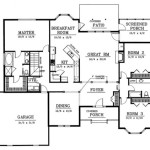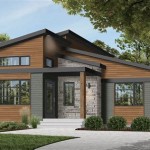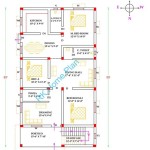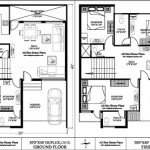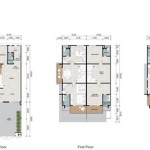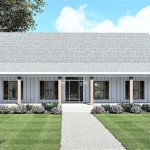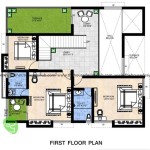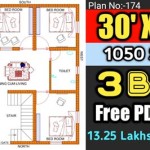Bungalow House Plans On Slab Design
Bungalow house plans on slab foundations represent a popular choice for homeowners due to their affordability, ease of construction, and adaptability to various terrains. A slab foundation, which is a reinforced concrete pad poured directly onto the ground, offers a simple and cost-effective alternative to crawl spaces or basements. When coupled with the inherent single-story design of a bungalow, the result is a home that is accessible, efficient, and potentially more energy-efficient than multi-story dwellings.
The design considerations for bungalow house plans built on slab foundations involve understanding the structural implications, insulation requirements, and moisture management strategies that ensure a comfortable and durable living environment. The focus is on integrating the foundation seamlessly with the architectural design to create a cohesive and functional home. This article will explore the key aspects of bungalow house plans on slab design, covering structural considerations, design advantages, and factors influencing cost-effectiveness.
Structural Integrity and Slab Foundation Design
The structural integrity of a bungalow house plan built on a slab foundation is paramount. The slab acts as the primary load-bearing element, distributing the weight of the house evenly across the prepared ground. The design process necessitates a thorough understanding of the soil conditions at the construction site. Soil testing is crucial to determine the soil's bearing capacity, which dictates the required thickness and reinforcement of the concrete slab.
Typically, a slab foundation consists of a concrete pad reinforced with steel rebar. The thickness of the slab can vary depending on the size of the house, the soil conditions, and local building codes. In areas prone to freezing temperatures, the slab may need to be designed with frost protection measures, such as extending the footings below the frost line. The placement of rebar within the slab must adhere to engineering specifications to ensure adequate tensile strength and prevent cracking.
Integrated within the slab are plumbing and electrical conduits. Careful planning is essential to ensure that these utilities are properly routed and accessible for future maintenance. Sleeves or chases are commonly incorporated into the slab design to allow for the passage of pipes and wires without compromising the structural integrity of the concrete. Pre-planning also includes incorporating any required slope for drainage to ensure water flows away from the foundation.
Monolithic slabs, where the slab and footings are poured in a single operation, are a common type of slab foundation used for bungalow construction. This approach provides a strong and stable foundation that is resistant to movement and settling. Another type is the thickened-edge slab, where the edges of the slab are thickened to provide additional support around the perimeter of the house. This is particularly beneficial in areas with expansive soils that are prone to swelling and shrinking.
Additionally, consideration must be given to incorporating seismic design principles in areas prone to earthquakes. This may involve additional reinforcement of the slab and connection to the building frame to prevent movement during seismic activity. The structural design must adhere strictly to local building codes and be reviewed and approved by a qualified structural engineer.
Design Advantages of Slab Foundations for Bungalows
Slab foundations offer several design advantages that make them well-suited for bungalow house plans. One of the primary advantages is accessibility. With no stairs required to enter the home, slab foundations are ideal for individuals with mobility issues or those who prefer single-level living. This can be particularly beneficial for aging in place or for families with young children.
Construction simplicity is another significant advantage. Slab foundations are generally faster and less expensive to construct than crawl spaces or basements. The reduced excavation and formwork requirements contribute to lower labor costs and a shorter construction timeline. This can be a significant benefit for homeowners on a budget or those who want to move into their new home quickly.
Slab foundations provide a stable and level surface for the bungalow, minimizing the risk of uneven floors or structural settling. This can improve the longevity and durability of the building. Furthermore, slab foundations can offer enhanced insulation properties. With proper insulation, the slab can help regulate the temperature inside the home, reducing energy consumption and improving comfort. Insulation can be installed under the slab, around the perimeter of the slab, or both, depending on the climate and energy efficiency goals.
In terms of design flexibility, slab foundations allow for a wide range of architectural styles and layouts. Bungalow house plans on slab foundations can be customized to suit the specific needs and preferences of the homeowner. The absence of a basement or crawl space can also free up valuable square footage on the main level, allowing for larger rooms or additional living spaces. The layout of the interior walls and room configurations benefit from greater flexibility due to the absence of structural constraints imposed by a basement or crawl space.
Termite resistance is another advantage. With proper treatment, slab foundations can provide a barrier against termite infestation, minimizing the risk of damage to the structure. Termite shields can be installed around the perimeter of the slab to further deter termites from entering the home. Regular inspections and preventative treatments are essential to maintain the effectiveness of these measures.
Factors Influencing Cost-Effectiveness
Several factors influence the cost-effectiveness of bungalow house plans on slab foundation design. The complexity of the design, the size of the house, and the site conditions all play a significant role in determining the overall cost. A simple, rectangular bungalow design will typically be less expensive to build than a more complex design with multiple angles and architectural features.
The cost of materials, such as concrete, rebar, and insulation, can also fluctuate depending on market conditions. Obtaining multiple quotes from suppliers and contractors is essential to ensure that the homeowner is getting the best possible price. Value engineering, which involves identifying cost-saving opportunities without compromising the quality or functionality of the design, can also help reduce overall construction costs.
Soil conditions can have a significant impact on the cost of the slab foundation. If the soil is unstable or requires extensive preparation, the cost of excavation, compaction, and soil stabilization can increase significantly. In some cases, it may be necessary to use specialized foundation techniques, such as piling or soil improvement, to ensure the stability of the slab. These techniques can add to the overall cost but are essential to protect the long-term integrity of the structure.
Energy efficiency considerations can also influence the cost of the slab foundation. While insulation can increase the initial cost of the foundation, it can also lead to significant energy savings over the life of the home. The amount of insulation required will depend on the climate and energy efficiency goals. In colder climates, more insulation is typically required to prevent heat loss through the slab. Properly installed insulation can also reduce condensation and moisture problems, improving indoor air quality and preventing mold growth.
The selection of materials for the flooring and finishes can also affect the cost-effectiveness of the slab foundation. Certain types of flooring, such as tile or hardwood, may require a perfectly level slab surface. This may necessitate additional preparation and leveling, adding to the overall cost. The choice of finishes, such as paint, trim, and fixtures, should also be considered in relation to the overall budget. Careful planning and selection of materials can help ensure that the bungalow house plan on slab foundation is both cost-effective and aesthetically pleasing.
Finally, local building codes and regulations can influence the cost of the slab foundation. Adhering to strict building codes may require additional inspections, permits, and materials, which can add to the overall cost. It is essential to work with a qualified architect, engineer, and contractor who are familiar with local building codes and regulations to ensure that the project is completed safely and efficiently.

Small 3 Bedroom House Floor Plans Design Slab On Grade Easy Home Drawing Narrow

Bungalow House Plans At Dream Home Source Architecture

House Plans With Slab Foundation

Contemporary Home Design With Roof Deck

House Plans With Slab Foundation

Modern Farmhouse Plan 1 300 Square Feet 3 Bedrooms 2 Bathrooms 041 00036

House Plans With Slab Foundation

Concrete House Plans Sater Design Collection

Truoba 723 2 Floor House Plan

Rey Four Bedroom One Y With Roof Deck

